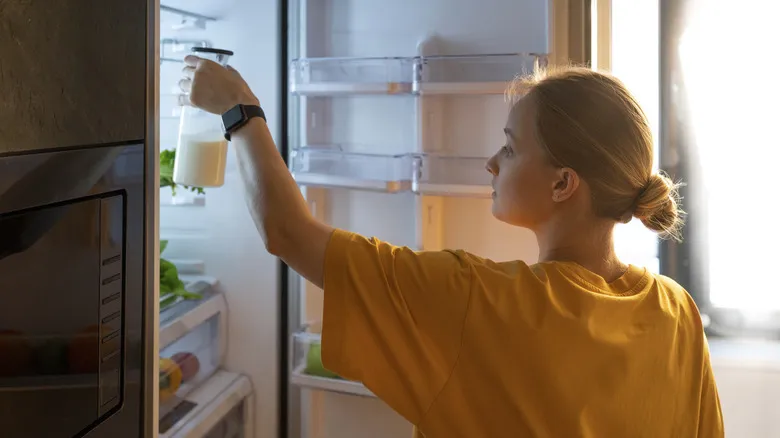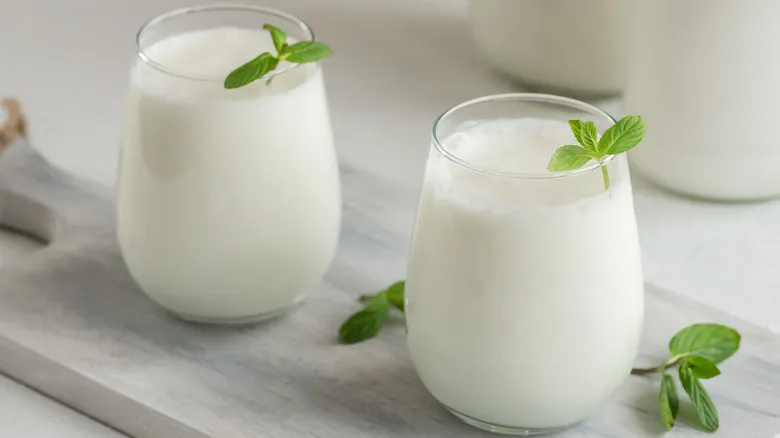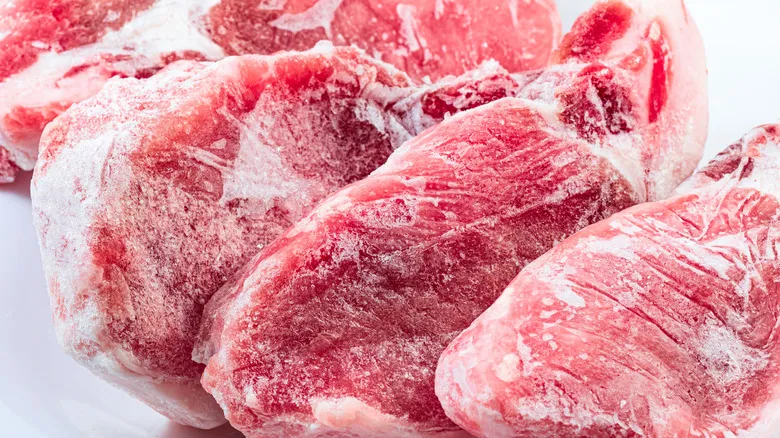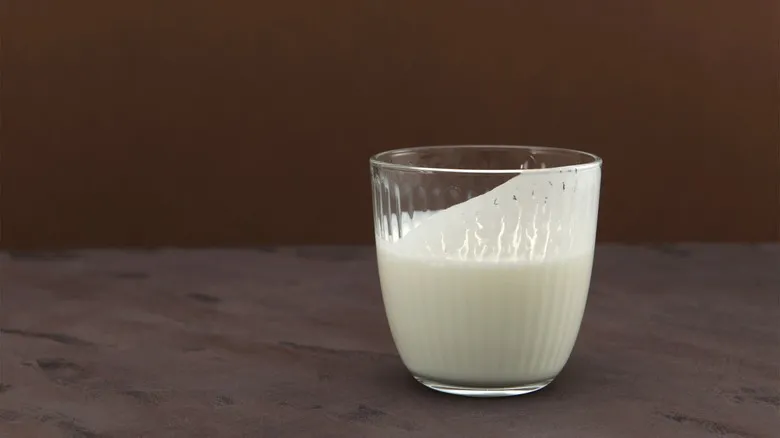How to extend buttermilk's shelf life

While buttermilk typically lasts a maximum of 14 days, you may be able to extend its shelf life by about a week beyond the sell-by date in certain situations. This extension is only feasible if the buttermilk is stored properly. Otherwise, you might end up with a spoiled carton before you have a chance to use it.
To avoid this issue, store buttermilk in the coldest section of your refrigerator, which is usually the back of the bottom shelf. Alternatively, you can freeze it for up to three months if you anticipate not using it before the expiration date. Just keep in mind that the texture may change once it thaws, so it's best to use thawed buttermilk primarily for flavor in recipes like baking, rather than for its texture. A practical approach is to purchase buttermilk in smaller containers and only open them when needed. You could also consider making buttermilk at home just before you plan to use it.
Signs your buttermilk is spoiled

Despite your best efforts to extend the life of your buttermilk, it's crucial to watch for signs of spoilage. This can be tricky since buttermilk is intentionally creamy, thick, tangy, and may even contain small lumps. However, there are some clear indicators to look for.
You can tell your buttermilk has gone bad if it has thickened significantly and become chunky, making it difficult to pour. The presence of mold or any discoloration is another obvious sign that it needs to be discarded. In terms of smell, fresh buttermilk has a sharp, mildly sour aroma, while spoiled buttermilk will have a strong, unpleasant odor. If you're feeling adventurous, you could also conduct a taste test. If the buttermilk tastes excessively sour and has a clumpy texture, it's a clear indication that it should no longer be used in your cooking.
Recommended

The Case For Freezing Steak Unwrapped

How Long Cream Cheese Stays Fresh After Opening

What You Need To Know To Choose The Sweetest Peaches At The Store

Why You Should Never Store Open Bags Of Flour In Your Kitchen Pantry
Next up

